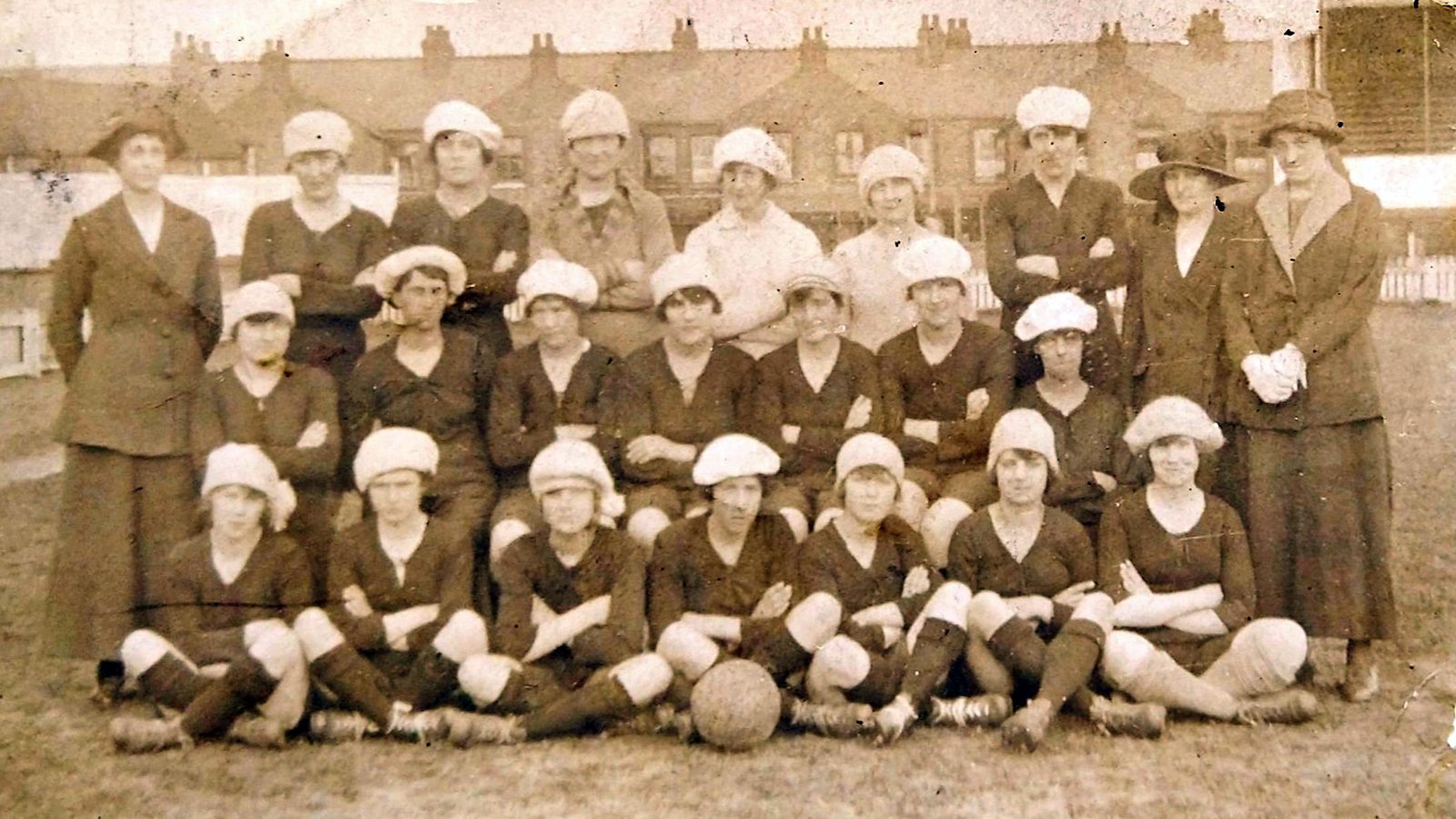Written by Kirky
This International Women’s Day, it’s an opportune time to reflect on how Grimsby women could be said to be pioneers of the women’s game.
Unfortunately, with the Victorian attitudes of the time, women playing football was regarded as “unsuitable” or even dangerous for the “fairer sex” and tended not to be covered by the local press, nor encouraged by most men in positions of power. Hence much is lost in the mists of time.
What we do know is that one of the earliest women’s teams was from Grimsby. The earliest women’s team is thought to have been one in Glasgow founded in 1881, but in Autumn 1886 the Grimsby team was formed. It has been reported that they played only two games, though I believe that may be untrue. More of that shortly.
The first known game was to be played in Grimsby and the team asked for permission to play on Clee Park. This was refused outright, but permission was granted for the game to go ahead on the Victoria Cricket Ground in the town. Where was this cricket ground? Possibly the park south of Corporation Road, but any information that places it elsewhere would be most welcome. Apparently, this first-ever known match was between two teams from the Grimsby Club, and the “Pontoonites” in the large crowd were scathing in their comments about the players.
The next game was again between two teams from the Grimsby club, this time played at the rugby club on Holderness Road in Hull. Again a large crowd assembled, and much money was paid over for the spectacle. Unfortunately, the crowd were dissatisfied with the sport provided, and there was a near riot with people demanding their money back. The treasurer described at the time as “not being seven” (not being naïve) had scarpered with the cash before things became overheated!
Now, that seemed to be that according to reports, but it has now been discovered that Edinburgh was to play against the Grimsby Club, which makes it the first English women’s CLUB, though other women’s teams also existed such as at Sunderland. If this game took place (there doesn’t appear to be any reports of the game or the score) then it might be the first women’s game over national boundaries … a kind of “Women’s European Cup” perhaps?
As with many things, wartime brought enormous social changes. So it was with the First World War as many women were employed doing the work of the men who had gone to fight in the trenches. Women in mines, in ammunition and armour-making factories, began forming their own football teams. GTFC were previously contacted by ardent Mariners fan, Howard Pask.
Howard writes:
“As a Mariners supporter and fan all my life, I was highly delighted to see the launch of the official GTFC women’s team and I wish them every success. It reminded me that my grandmother Beatrice Pask nee Milner once played for Grimsby Town Ladies back in the 1920s. She was very proud of her playing career with the Mariners as a centre forward. I have attached two photos. “The first one is a team photo taken at Blundell Park (above) when Beatrice was only 16 years old, so probably 1920 I think, and she is on the bottom row 2nd from the left. I’m afraid I have no idea who anyone else is. The second photo is an individual photo taken in 1921. Unfortunately, I have no other information regarding the team and who they played in those days but I hope you find it interesting and inspiring to all your young female players. I’m sure Beatrice would have been cheering the modern women’s team on.”
Women’s football was becoming quite popular in the years immediately after the Great War. As you can see from Howard’s photo, the women were no longer confined to searching for grounds to play on – but actually playing on Blundell Park and other football grounds.
For whatever spurious reason they had, the FA banned women from playing on League and Association grounds from 5th December 1921. The English Ladies Football Association held an inaugural meeting on 10th December 1921, when 25 ladies’ football teams were represented. The second meeting took place in GRIMSBY when 60 clubs were there (there were approximately 150 ladies’ football teams in existence).
The sport returned to a minority sport for the next 50 years. It wasn’t until 1969 that that ban was lifted, though there were occasional matches played, such as one at Louth United’s ground in the mid-sixties.
Now, with the birth (or rebirth!) of Grimsby Town ladies, the town that was at the very forefront of women’s football almost 140 years ago, once more has a representative team.

